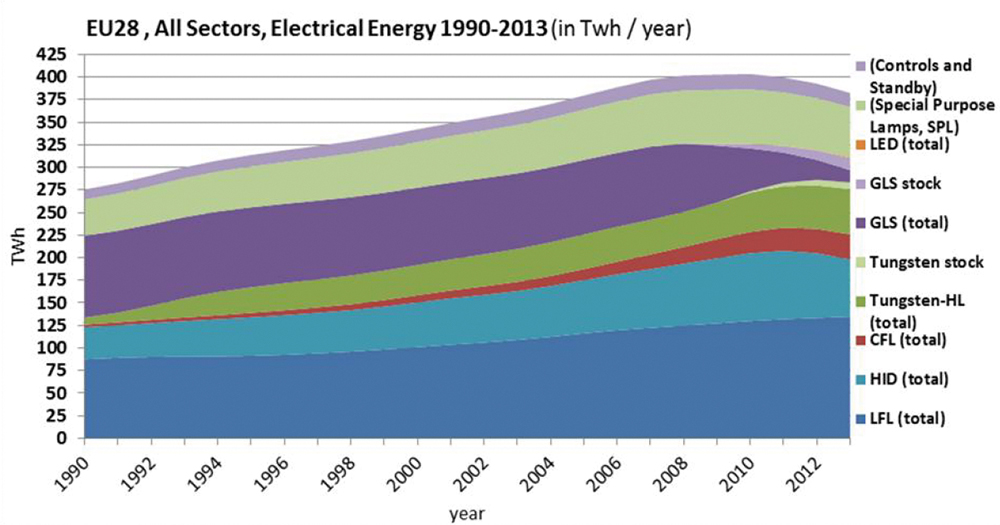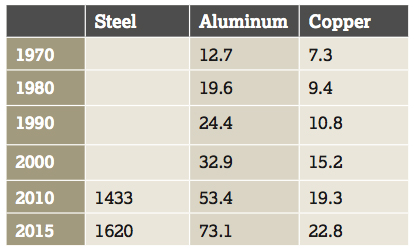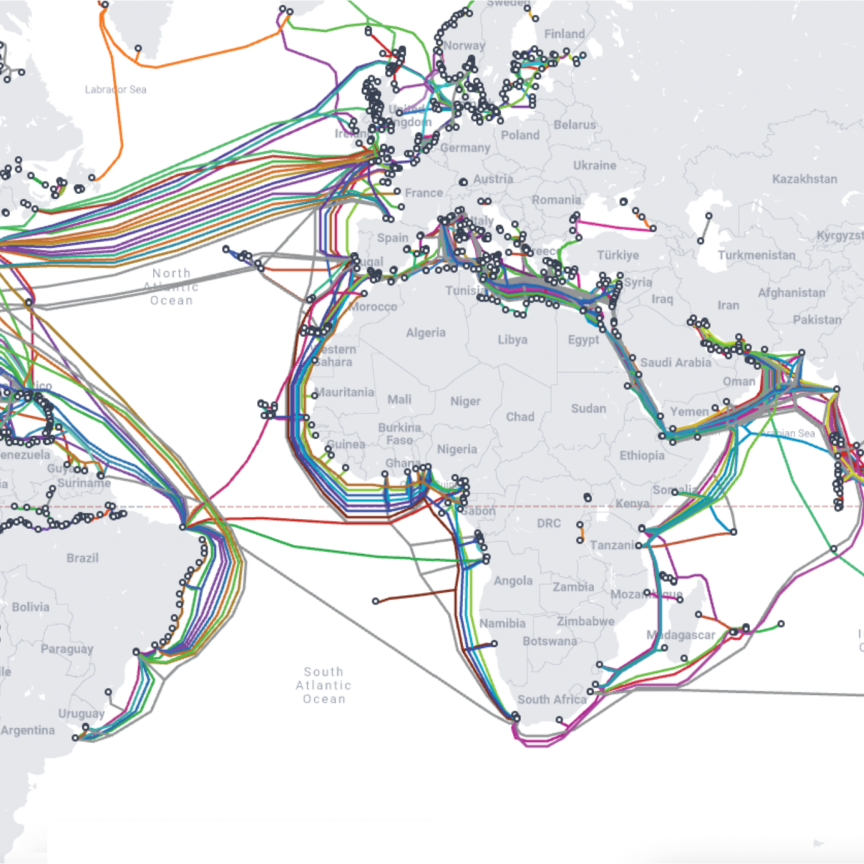Photonics is a very unique field. It is small – or even very small – compared to other industries like automotive, chemistry, aerospace or electronics. But as an enabling technology, its impact on environmental issues and challenges is tremendous. Without photonics, we would be almost blind to the impact of human activities on global warming and environment.
In addition to monitoring, photonics provides solutions that will help limit or reduce CO2 emissions dramatically, now and in the future. These were the findings of a report, Light as the key to global sustainability, produced by the German industry association Spectaris and Messe München, in co-operation with Fraunhofer ILT and the Fraunhofer Group for Light and Surfaces, using data from Tematys. It was released at Laser World of Photonics 2019.
It is clear that the environmental market is full of opportunities for companies of any size. However, as the field is driven by regulations and standards that can limit or slow down the adoption of innovations, companies must identify niches where their products can be competitive.
No other technology can achieve non-contact remote monitoring at large scales
The biggest environmental impact of photonics so far has been in its ability to measure and monitor without contact, remotely and at very large scales.
Along with predicting weather events, photonics systems mounted on satellites have been used for monitoring sea surface temperature, ice cover in winter and iceberg movements. The list of applications is endless: studying the progression of glaciers or deserts; tracking smoke from forest fires, volcanic ash, or sandstorms in the Sahara. They can also detect oil spills at sea, identify the formation of insect swarms or measure light pollution in urban areas. All these critical data are collected by photonic sensors or imaging systems.
But photonics is also essential at smaller scales. In cities, lidar sensors help measure small particles in the atmosphere. Various spectroscopic techniques monitor carcinogenic pollutants in the air, or detect gas leaks along pipelines. Photonic-based equipment is used to test the conformity of automotive exhausts.
The list of applications could go on. We would be almost blind without photonics technologies. But there is still a lot to do in terms of improving detectors and the techniques used to obtain data.

Figure 1: Electrical energy used for lighting, EU28 cumulative total in TWh/year, all sectors
(source: Preparatory Study on Light Sources for Ecodesign and/or Energy Labelling Requirements - Lot 8/9/19 - Final report, Task 3)
Energy savings through lighting
The impact of photonics can also be direct, by limiting or preventing huge quantities of CO2 emissions from entering the atmosphere.
Almost everyone has heard about the ‘LED revolution’, the transition from traditional light sources to LEDs, which are much more efficient than bulbs, halogen lamps or fluorescent lamps. As a result, we can expect spectacular energy savings and greenhouse gas emission reductions.
Energy consumption has been a concern for the lighting community even before the market introduction of LED lighting devices. In 2008, the European Union adopted a directive for the progressive replacement of old incandescent lamps by low consumption sources. And even though the installed capacity has kept growing, replacing bulbs with more efficient sources has had a very significant effect on energy use. Figure 1 shows that the energy consumption for lighting in the EU began to decrease after a peak in 2010 and was more than five per cent lower in 2013. For the residential sector, the peak could be observed in 2008 and the decrease reached 13 per cent in 2013.

Figure 2: Global yearly energy consumption by lighting system – TWh
But now, the large-scale adoption of LEDs is amplifying the already significant impact of low-energy light sources. The global yearly energy consumption by lighting systems is expected to keep on decreasing and will slow down around 2030, when almost all lighting systems will be based on LEDs (figure 2).
Solar energy is already playing a major role in CO2 mitigation
Photovoltaic devices have been installed widely in the past decade, which has resulted in a progressive reduction of cost of ownership. And good news: in 2020, photovoltaic energy will become competitive with fossil fuel energy, according to the International Renewable Energy Agency[1]. That is why its share of the global energy mix is expected to grow very significantly. According to the International Energy Agency, between 9 and 21 per cent of electricity produced in 2040 should come from photovoltaics, depending on adopted scenarios[2].
A bright future is ahead for photovoltaics, but it is always important to consider the entire life-cycle when dealing with energy production. In terms of land impact, utility-scale solar facilities should be located on low-value land to avoid competing with agricultural land. On the other hand, smaller scale solar PV systems installed on buildings provide a very efficient way to make roof or wall surfaces actively useful in urban areas.
Despite the use of toxic materials, the gain provided by photovoltaics is that the production is almost carbon free. Some comprehensive studies of the lifecycle of photovoltaic systems show that its emission factor is in the range of 0.020 to 0.050 tCO2-eq/MWh.

Table 2: Global production of major metals
(Mt, sources: BIR, Worldsteel, WBMS)
Recycling metal is more energy efficient that producing it from extracted ore
One of the best indicators of the global economic growth is demand of metals. Table 2 shows the demand since the 70s for steel, aluminium and copper. But this continuous increase created environmental and sustainability issues, in terms of energy spent for producing the metal and resource exhaustion.
Fortunately, metals, especially the major ones, are rather easy to recycle. Today, more than 35 per cent of steel and more than 20 per cent of aluminium come from a ‘secondary’ production[4] [5]. Producing new steel or new aluminium from scraps takes much less energy than to produce it from extracted ore (table 3). The differences are dramatic; secondary aluminium ‘costs’ 92 per cent less than primary aluminium. It is somewhat less for copper and steel but it is still remarkable, with 65 per cent and 58 per cent savings.

Table 3: Energy required to produce steel, aluminium and copper from a primary production (from ore) and secondary production (recycling) [3]
Photonics optimises metal recycling
Could we improve carbon savings of secondary metal production further? One major limitation of metal recycling is that, in order to reuse metal, one has to transform scraps into standardised grades of metals. There are plenty of metal grades, containing the major metals (iron and aluminium, for example) but also additives or ingredients that will improve performance. For example, steel is a blend of carbon and iron; stainless steel contains around 10 per cent chromium. If all scraps of any grade are melted together, all additives will also be melted together and it will become difficult to produce standardised grades again. This is where photonics offers a solution.
Laser induced breakdown spectroscopy (LIBS) is a rapid chemical analysis method that uses a short laser pulse to create a micro-plasma on the sample surface. Compared to other elemental analysis techniques, this method is very suitable for scrap and waste sorting, as it can measure away from the sample, from a distance of a few metres. The other advantage is that it is able to vaporise the surface of the sample and remove paint or an oxidised layer to reveal the core material to be identified.
LIBS is the perfect technique for sorting metal scraps and to simplifying the recycling process, up to the secondary production of standardised quality metals. LIBS for metal scrap sorting is still emerging but should experience a bright future. The percentage of CO2eq savings which can be attributed to LIBS is expected to increase from around one per cent today to 10 per cent in 2030.
Environmental challenges open up many opportunities
The examples presented demonstrate how photonics is vital for facing environmental issues. It provides a means to understand and explain – with scientific data – the impact of human activities on nature. It also provides solutions for making recycling competitive and to avoid huge quantities of greenhouse gas emissions from entering the atmosphere. There is a need for sensors and monitoring equipment, from the most sensitive instruments in laboratories to handheld analysers used in the field or fast sensors implemented in industrial processes.
But companies wanting to enter this market should be careful. Many sensing techniques exist, so photonics companies need to identify niches where their technologies will be competitive, demonstrating that they can do what other techniques cannot – at an affordable price.
The second critical factor of the environmental market is that it is driven by regulations. The market for automotive exhaust analysers exists because laws dictate that fuel consumption and exhaust pollution from cars need to be reduced. The air monitoring market is driven by regulations adopted by Europe in 2006 ‘concerning the establishment of a European Pollutant Release and Transfer Register and amending Council’. In the USA, The Clean Air Act was issued to control air pollution on a national level.
Such rules can be a boost for the market, especially when existing technologies cannot ensure customers meet the new standards. However, they can also limit the introduction of innovative products. For example, will a water company welcome a new pollutant analyser capable of detecting at the parts per trillion (ppt) level, when the regulation requires only parts per billion (ppb)? They might fear that law makers will take advantage of this new sensitivity by making the rules harder, which in turn will increase the cost of tap water production dramatically.
The environmental market is full of opportunities for photonics companies, particularly as photonics will be the only solution for many environmental challenges. But studying the market carefully, benchmarking other techniques and understanding the regulations and the needs of every stakeholder will be critical for developing smart systems that bring a well-perceived added value.
References
[1] IRENA (2017), IRENA Cost and Competitiveness Indicators: Rooftop Solar PV, International Renewable Energy Agency, Abu Dhabi, www.irena.org[2] World Energy Outlook 2018, OECD/IEA
[3] Report on the Environmental Benefits of Recycling – 2016 edition, Bureau of International Recycling, 2016
[4] Global Non-ferrous Scrap Flows 2000-2015, with a focus on Aluminium and Copper, Bureau of International Recycling, 2016
[5] World Steel Recycling in Figures 2013 – 2017, Steel Scrap – a Raw Material for Steelmaking, Bureau of International Recycling, 2018
[6] “Licht als Schlüssel fur globalen ökologischen naachaltiegkeit”, Messe München, Spectaris, Fraunhofer ILT, Fraunhofer L&S, Tematys, 2019


